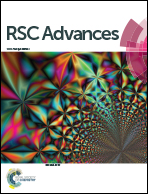Preparation of chitosan nanoparticles by nanoprecipitation and their ability as a drug nanocarrier
Abstract
Polysaccharide-based nanoparticles represent a very promising drug delivery platform, particularly for the transmucosal delivery of bioactive macromolecules. Thus, the aim of this paper is to revisit the nanoprecipitation processes for preparing chitosan nanoparticles and to evaluate the influence of the process parameters on their characteristics. Chitosan was dissolved in water as N-(methylsulfonic acid) chitosan or directly in aqueous acetic acid. Methanol was used as the nonsolvent diffusing phase. Nanoparticles became smaller as the polymer concentration decreased or the nonsolvent to solvent volume ratio increased. Particles prepared in acidic media are slightly larger than those precipitated from N-(methylsulfonic acid) chitosan. Replacement of methanol by water in the suspension medium resulted in a notorious increase in their size. On the other hand, very little additions of Tween-80 to the nonsolvent phase render smaller nanoparticles, with a similar mean-size values. Nanoparticles precipitated in methanol have roughly the same dimensions, regardless of the ionic strength of the chitosan solution. These chitosan nanoparticles have good association and loading efficiency values of a model substance showing their ability as a nanocarrier for drug delivery systems.


 Please wait while we load your content...
Please wait while we load your content...